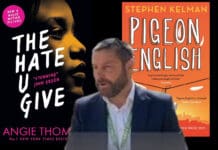The Department for Education (DfE) guidelines advise schools to stagger break times, as well as drop-off and pick-up times, to reduce the number of pupils moving around.
Schools should also consider introducing one-way circulation, or placing a divider down the middle of corridors.
The advice also suggests nurseries and schools should remove soft furnishings and toys that are hard to clean – and try to keep children in the same small groups at all times each day.
Those who cannot keep pupils in small groups have been told to discuss options with their local authority or trust, with the possibility of sending some children to nearby schools.
It comes after the government’s 50-page COVID-19 recovery strategy detailed plans for all primary school pupils in England to be back in the classroom for a month before the summer.
The government expects children to be able to return to nurseries and childcare settings, and for Reception, Year one and Year six pupils to be back from 1 June.
Families who choose to keep their children at home when schools reopen will not face fines.
But parents will be strongly encouraged to take up the places – unless the child or a family member is shielding, or the child is particularly vulnerable.
The guidance says most staff in education settings will not require PPE when they open up, but it should be worn if a pupil becomes unwell with symptoms of COVID-19 while in the setting.
While acknowledging many young pupils will not be able to remain two metres apart, the advice says demand for childcare is “likely to be lower than usual” which “should allow for small group working”.
However, in some cases, it may be necessary to introduce a temporary cap on numbers to ensure safety is prioritised.
The DfE has also said pupils eligible to return on 1 June will have access to testing if they display coronavirus symptoms, alongside symptomatic members of their household.
Education Secretary Gavin Williamson said: “I know how hard schools, colleges, early years settings and parents are working to make sure children and young people can continue to learn at home, and I cannot thank them enough for that.
“But nothing can replace being in the classroom, which is why I want to get children back to school as soon as it is safe to do so.
“The latest scientific advice indicates it will be safe for more children to return to school from 1 June, but we will continue to limit the overall numbers in school and introduce protective measures to prevent transmission.”
Paul Whiteman, general secretary of school leaders’ union NAHT, said: “It seems wildly optimistic, to the point of being irresponsible, to suggest that we will be in a position to return all primary children to school within the next seven weeks.”










